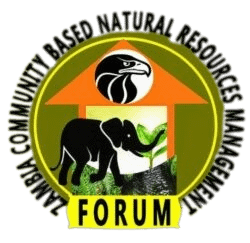THE CBNRM LEARNING GROUP IN ZAMBIA
THE CBNRM LEARNING GROUP IN ZAMBIA
Protected Areas or Conserved Area governance and the related issue of equity have received relatively little attention until recently. In addressing this gap BIOPAMA is at the forefront of a growing global effort to give more emphasis to governance and equity. This responds both to increasing awareness of the relevance of equity to conservation at site level and the inclusion of equity in global conservation and sustainable development targets.
The Community Based Natural Resources Management (CBNRM) Learning Group through the EGC BIOPAMA project is aimed at sharing knowledge, lessons, opportunities and challenges. The Capacity building is easily achieved through members learning from each other’s knowledge and experience (through a peer-to-peer learning) and provide experts to provide training on specific topics. While the primary target group for capacity building is the group members themselves from the 12 Community Resources Boards of the 6 GMAs of the Project sites namely Namwala,Mumbwa,Mufunta,Chiawa,Lower Luano and Rufunsa, the learning group also involves other experts in the CBNRM arena, who through vast experience contribute to improving governance in natural resources management. The CBNRM Learning Group was established in May 2021 during the Inaugural Learning Group Meeting in Lusaka Zambia which had Community Representatives, Government Departments and Community Based Organisations (CBOs)


The Learning Group aims to increase the contribution of the GMAs to the well-being of their communities – fully including poorer men, women, and youth – while also improving wildlife conservation. Well-being refers to their livelihoods and quality of life in the broadest sense not just financial benefits although these are important. Where conservation and livelihood objectives are competing (i.e. there are trade-offs), the learning group will enable its members to better and more fairly manage these trade-offs. The Learning Group is supported by BIOPAMA to achieve these key objectives;
- Building the capacity of members to improve practices at site level including;
- Assessing the quality of governance of a GMA and identify and plan actions for better and fairer governance;
- Effectively implementing actions for better and fairer governance, monitoring and learning from the progress of these actions and duplicating the efforts in other areas and The CBNRM Learning Group Continues to undertake these activities .
What has the Learning Group Achieved;
- Formed a Learning Group Platform for sharing lessons and communication with members from Communities, CBOs, and Government departments.
- Shared Lessons through the Early Harvesting of SAGE Results from specific Project sites.
- Continues to Engage key Partnerships and stakeholders in improving governance and conservation.
- Contributed to inputs into the National CBNRM policy and review of wildlife act, and support for sustainable Forest conservation.


Building the CBNRM Learning Group Beyond the Project:
The Zambia CBNRM Forum will continue to facilitate the existence of the learning group so it can contribute to the enhancement of good governance in the following ways ;
- Through the CBNRM Learning Group, the Project will continue to Build partnerships to expand the with (TNC, FZS, WWF, and AP).
- Continue to improve governance in different Landscapes by Applying governance tools
- Build national consensus on CBNRM management systems.
- Continue to contribute to the National CBNRM policy and ensure that community voices are represented.
- The CBNRM Learning Group-Coordination and Planning for an International Event.
Lessons Learnt From the 3 CBNRM Learning Group Meetings ;
- Communities are the Resource Right holders and sharing best lessons with each other and Partners has been an eye-opening experience especially on emerging governance issues and trends.
- The CBNRM Model is very important in Natural Resources and Conservation as it promotes sustainability, transparency and inclusion.
- Gender Integration and Equity are important drivers to increase the participation of marginalized groups especially women and youths.
- Partnership and Collaboration is key to understanding; the activities that have been identified as the various governance challenges in the different Landscapes.
- These meetings can also virtually be conducted.
